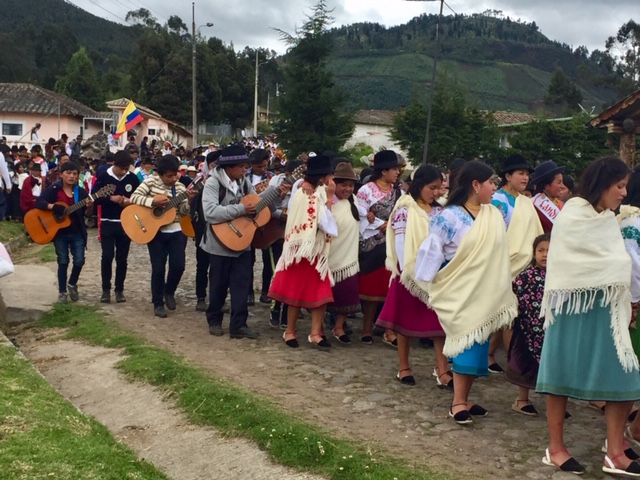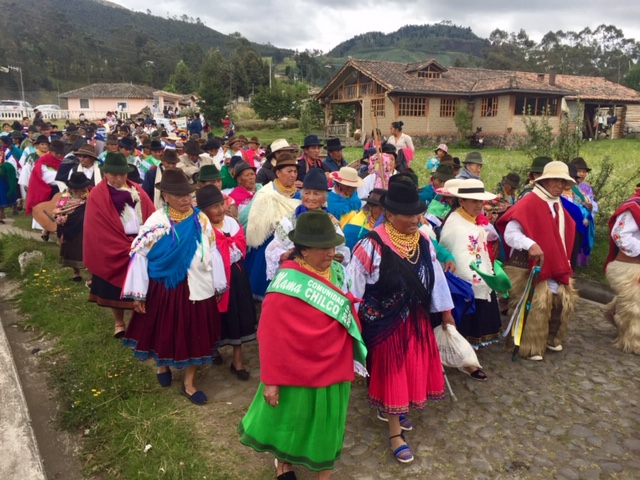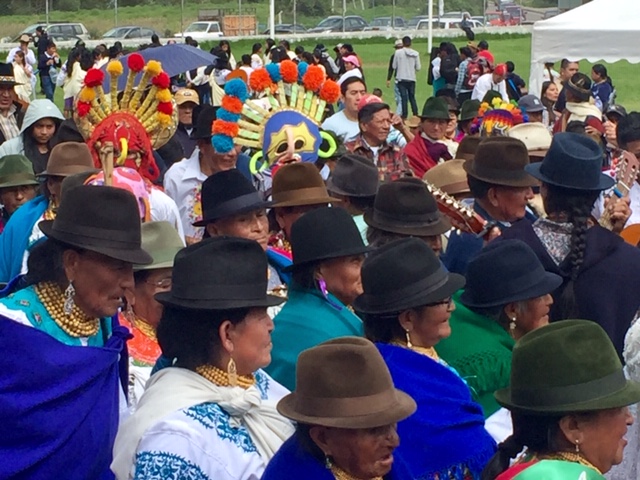In the Andes, the Fiestas de San Juan combine Catholic beliefs with native Andean traditions. Known in other parts of the world as The Feast of St. John, this day celebrates the birth of St. John the Baptist. The date, the 24th of June, is intentional in that it is exactly six months prior to the birth of Jesus.
San Juan, or Saint John the Baptist, is considered the caretaker of the agricultural bounty. While Inti Raymi is traditionally an indigenous celebration giving thanks for the harvest, San Juan is traditionally the catholic celebration giving thanks for the same thing. Since Catholicism has taken hold in the Andean Indigenous community, they celebrate both of these important days. (When it comes to giving thanks for a harvest and hoping this will get you in good standing for next year, one can never be too thankful!)
To celebrate, the Spanish-blood “Mestizos” such as the members of my family, gather with the local Indigenous people to circle dance wherever there is space. The dancers encircle a group of musicians that play a special genre of music called, of course, Sanjuanito. The circle is a nod to the agricultural cycle, and it represents the path of the sun. I admit, I thought all circles looked the same, but Jose has been educating me about the different styles adapted by each of the communities.
To add to the fun, the 29th of June is reserved for celebrating San Pedro (Saint Peter), and San Pablo (Saint Paul). These saints are considered the guardians of the door to heaven. Jose told me that he remembers as a child that this date was much more important than it is today. People would gather on the street corners and shout “Open the doors of the sky for the love of God (to shine down on me.)” In this way, people were asking for the purification of their soul and when the doors are open, their soul can rise up to the heavens. I didn’t see anybody shouting on a street corner, but I did see a lot of festivities on this day. Since some communities are celebrating San Juan, and others celebrating San Pedro and San Pablo, the celebrations hosted by each barrio all seem to run together throughout the end of June and into July and August as well. Understandably, most people only celebrate within their own barrio or they may be invited guests to celebrate in the special traditions of another barrio. Therefore, only fanatics like my family (and me!) go to a variety of different celebrations.
| The tiny barrio of Angochagua even had a professional sign to announce their cooperative community. These Indigenous communities are often very well organized with Presidents and executive personnel. Often the leaders of these communities wear a special sash when they are performing executive duties. |
 |
| But Jose, Pablo, and our friends, Antony and Alex carried on. |
| San Juan Dancers in our driveway |
| Me, in a San Juan mask… always ready for the next fiesta! |














